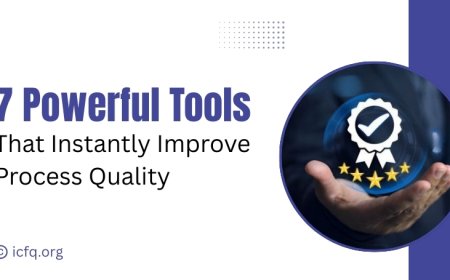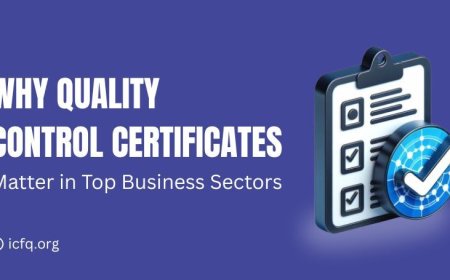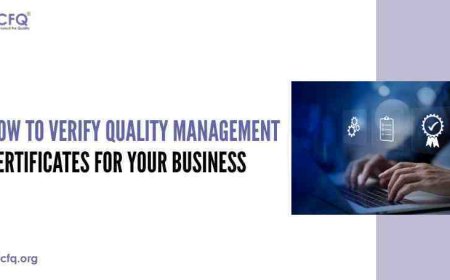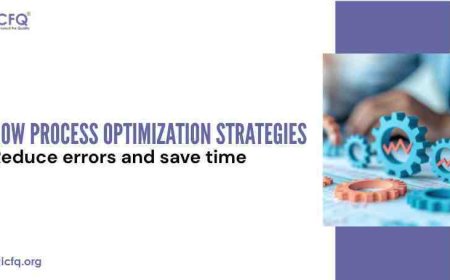Achieve Success with Six Sigma Green Belt Certification
Achieve career growth and skill development with Six Sigma Green Belt certification. Enhance problem-solving, efficiency, and contribute to organizational success.

As someone who's certified in the Six Sigma Green Belt, I can tell you that it’s a great way to improve both your skills and your career. The certification focuses on understanding how to identify problems in processes, reduce errors, and make things run more efficiently. With this knowledge, you can help your team or organization streamline operations, increase quality, and boost customer satisfaction. It’s a valuable tool that can open up new opportunities and set you apart in the job market.
Whether you're looking to boost your career prospects, improve your organization's processes, or enhance your skills, achieving Six Sigma Green Belt certification can be a powerful step toward success.
What is Six Sigma Green Belt Certification?
The Six Sigma Green Belt certification is designed for professionals who are involved in process improvement initiatives within their organizations. Green Belts are often part of a Six Sigma team and play an essential role in driving quality improvement projects. Unlike Black Belts, who typically lead major Six Sigma projects and manage large teams, Green Belts usually work on smaller projects, often under the supervision of Black Belts.
However, Green Belts are still highly skilled in the Six Sigma methodology and play a crucial role in problem-solving, data analysis, and ensuring that improvement initiatives are successfully implemented.
Why Get a Six Sigma Green Belt Certification?
-
Career Growth
A Green Belt certification can help you move up in your job. It shows you know how to improve processes and get better results. Employers like workers who can solve problems and make things more efficient, which can help you get promotions or stand out to new employers. -
Learn New Skills
You’ll learn how to analyze data, set goals, measure performance, find problems, and make improvements. These skills are useful in many jobs and can help improve quality, lower costs, and keep customers happy. -
Increase Efficiency
Six Sigma helps companies reduce waste and mistakes. As a Green Belt, you’ll learn how to make processes work better, saving time and money for your company. -
Improve Problem-Solving
You’ll learn to solve problems using data and analysis. These skills can help you tackle challenges both at work and in your personal life.
Key Skills You’ll Gain with Six Sigma Green Belt Certification
As you work toward your Six Sigma, you will acquire a variety of skills that can enhance both your professional and personal development. Some of the key skills include:
-
DMAIC Process The DMAIC process (Define, Measure, Analyze, Improve, Control) is the foundation of Six Sigma. Green Belts will learn how to apply this structured approach to problem-solving.
-
Define: Establish the scope, goals, and objectives of the project.
-
Measure: Collect data to understand current performance and identify the problem.
-
Analyze: analyze the data to identify root causes and areas for improvement.
-
Improve: Implement solutions to eliminate issues and improve processes.
-
Control: Set up monitoring systems to ensure that improvements are sustained.
-
Data Analysis and Interpretation Data analysis is central to the Six Sigma methodology. As a Green Belt, you’ll become proficient in using tools such as statistical software, Pareto charts, histograms, and control charts.
-
Root Cause Analysis One of the most important aspects of Six Sigma is finding the root cause of problems. Green Belts are trained to use various methods, such as fishbone diagrams (Ishikawa diagrams) and the 5 Whys technique, to dig deeper into issues and identify their underlying causes.
-
Project Management: Gain skills in setting project goals, creating timelines, and managing resources while working with cross-functional teams.
-
Change Management: Learn to handle resistance to change and integrate improvements smoothly into your organization.
-
Process Mapping: Use tools like flowcharts and SIPOC diagrams to visualize processes, spot inefficiencies, and find improvement opportunities.
Steps to Achieving Six Sigma Green Belt Certification
-
Understand Prerequisites While there are no formal prerequisites for certification, it’s beneficial to have a basic understanding of quality management principles and some experience in process improvement. If you're new to Six Sigma, you may want to take introductory courses before diving into Green Belt training.
-
Choose a Certification Provider Several organizations and institutions offer certification, including the American Society for Quality (ASQ), the International Association for Six Sigma Certification (IASSC), and various online learning platforms. It’s important to choose a provider whose certification is recognized by your industry or organization.
-
Complete Training Six Sigma Green Belt training typically consists of classroom sessions or online courses that cover the core concepts, tools, and techniques of Six Sigma. During training, you will engage in hands-on projects, practice using Six Sigma tools, and learn the DMAIC methodology in depth. Training can last anywhere from a few days to several weeks, depending on the provider and format.
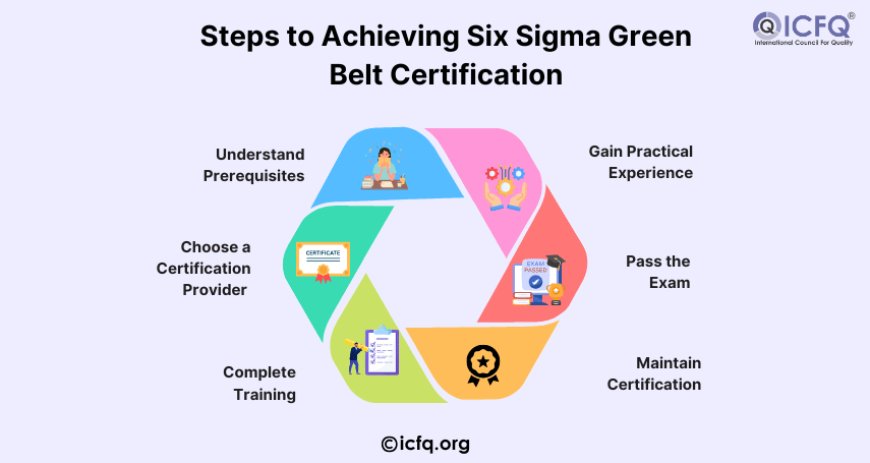
-
Gain Practical Experience Certification requires you to apply Six Sigma principles in real-world situations. Some programs may require you to complete a project as part of your certification process. This project allows you to showcase your ability to apply the concepts you’ve learned to solve actual business problems.
-
Pass the Exam After completing training and gaining practical experience, you will need to pass an exam to earn your certification. The exam typically includes multiple-choice questions that test your knowledge of Six Sigma principles, tools, and techniques. You’ll need to achieve a passing score to receive your certification.
-
Maintain Certification While the certification typically does not expire, it’s important to stay updated with industry trends, new tools, and evolving methodologies. Continuing education and professional development will help you maintain your expertise and enhance your value in the workplace.
Benefits of Six Sigma Green Belt Certification
-
Enhanced Career Opportunities certification can increase your employability and open doors to new career opportunities. Many organizations look for employees with Six Sigma expertise to help them improve processes, reduce costs, and deliver better results.
-
Improved Job Performance The skills you develop during your Six Sigma Green Belt training will not only help you with career advancement but also improve your job performance. You'll be able to contribute to your team’s success by applying data-driven approaches to solve problems and improve processes.
-
Increased Earning Potential As you gain certification, your earning potential may increase. Employers often offer higher salaries and bonuses to employees with specialized skills in process improvement and quality management.
-
Contribution to Organizational Success By applying Six Sigma methodologies, Green Belts can help organizations reduce waste, improve quality, and increase efficiency. Your ability to drive process improvements will contribute directly to your organization’s success
Achieving Six Sigma Green Belt certification enhances your skills in process improvement, data analysis, and problem-solving. It boosts career prospects, increases earning potential, and contributes to organizational success by driving efficiency and quality. This certification opens up new opportunities and strengthens both personal and professional growth.










